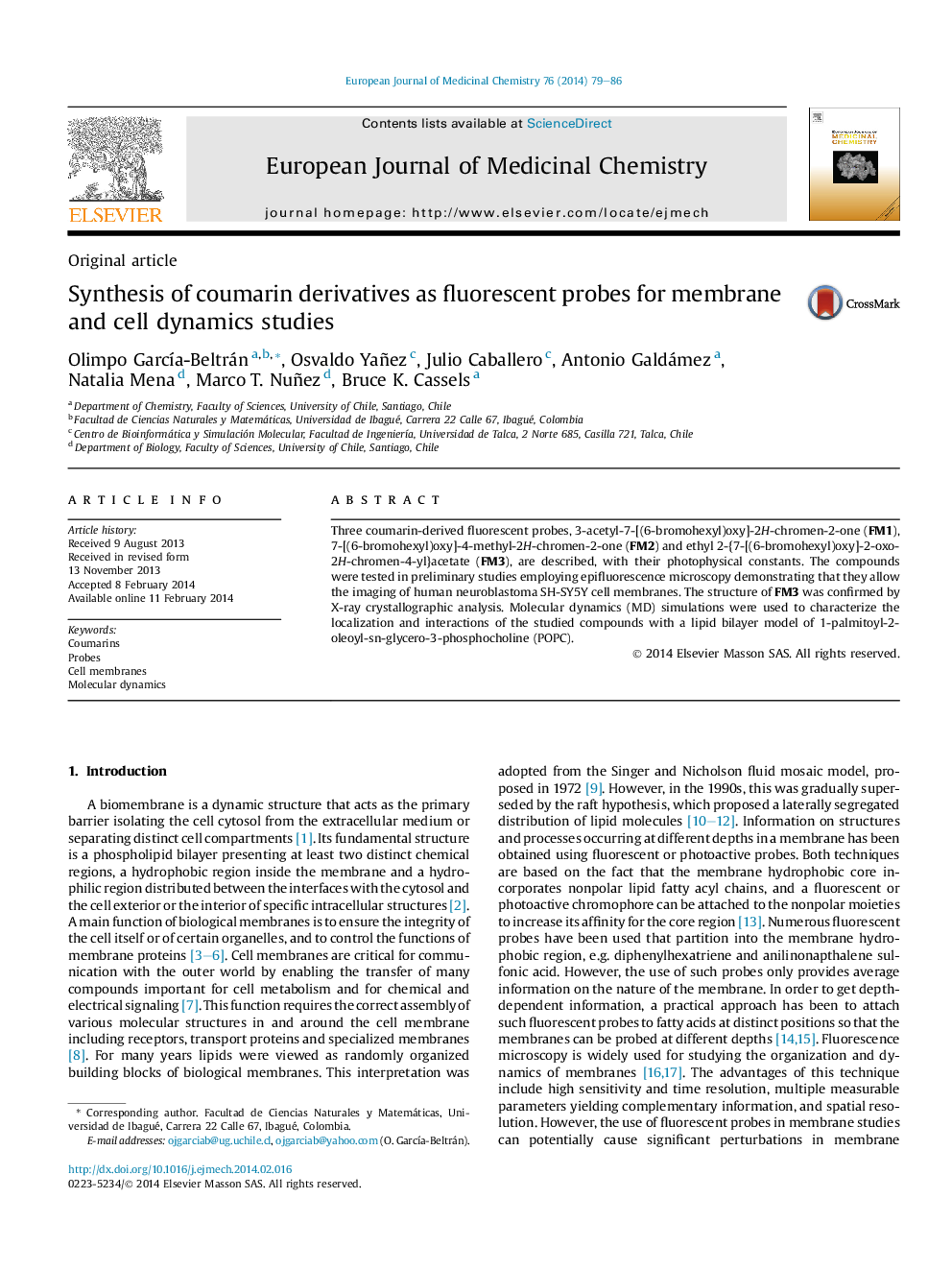| Article ID | Journal | Published Year | Pages | File Type |
|---|---|---|---|---|
| 1394228 | European Journal of Medicinal Chemistry | 2014 | 8 Pages |
•Three coumarin-derived fluorescent probes (FM1, FM2 and FM3) were synthesized.•FM1, FM2 and FM3 localize preferentially to the plasma membranes of living cells.•The coumarin moiety of all three probes penetrates to the glycerol level of membranes.•The aliphatic chains of FM1 and FM3 align with the alkyl chains of the phospholipid.•The aliphatic chain of FM2 lies parallel to the membrane surface.
Three coumarin-derived fluorescent probes, 3-acetyl-7-[(6-bromohexyl)oxy]-2H-chromen-2-one (FM1), 7-[(6-bromohexyl)oxy]-4-methyl-2H-chromen-2-one (FM2) and ethyl 2-{7-[(6-bromohexyl)oxy]-2-oxo-2H-chromen-4-yl}acetate (FM3), are described, with their photophysical constants. The compounds were tested in preliminary studies employing epifluorescence microscopy demonstrating that they allow the imaging of human neuroblastoma SH-SY5Y cell membranes. The structure of FM3 was confirmed by X-ray crystallographic analysis. Molecular dynamics (MD) simulations were used to characterize the localization and interactions of the studied compounds with a lipid bilayer model of 1-palmitoyl-2-oleoyl-sn-glycero-3-phosphocholine (POPC).
Graphical abstractFigure optionsDownload full-size imageDownload as PowerPoint slide
